Which country emits the most carbon dioxide that causes climate change?

Since the industrial revolution of the 18th century, humankind continues to emit a large amount of carbon dioxide, and finally it has a great influence on the global climate and is said to cause climate change. However, the amount of carbon dioxide emissions varies greatly from country to country, and 'which country is responsible for modern climate change?' is often a debate.
Who Is Responsible For Climate Change?? Who Needs To Fix It?-YouTube
https://www.youtube.com/watch?v=ipVxxxqwBQw
Carbon dioxide emissions are increasing year by year, and it is said that the cumulative total up to 2019 is 1,537 billion tons.
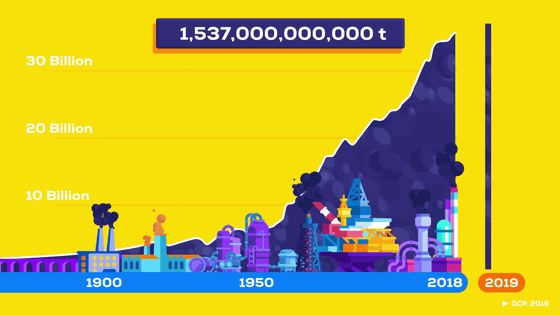
In addition, the amount of emissions each year is increasing.

Looking at greenhouse gas emissions including methane gas and nitrogen oxides, in 2017 alone, approximately 51 billion tons were emitted.
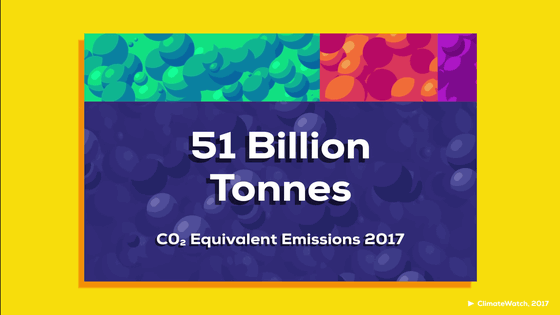
Greenhouse gases such as carbon dioxide absorb the heat radiated from the earth, and energy cannot escape to the atmosphere, resulting in a rise in the temperature of the earth. It is said to be a cause of various climate changes.

Climate change due to carbon dioxide emissions has been steadily worsening, and the average world temperature has tended to rise since 2001. For example, May 2020 was the hottest May in history .
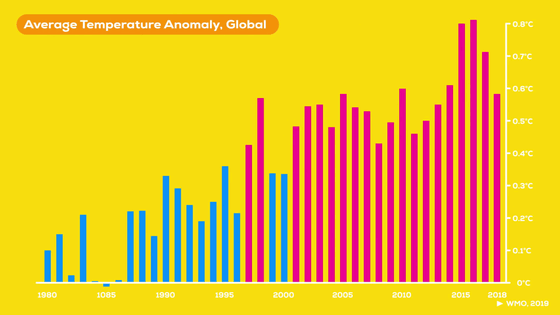
Therefore, although carbon dioxide emissions are increasing year by year, is thought to take measures all over the world trying to zero in prospect 2050.

However, while the international conference calls for replacement with renewable energy such as wind power and solar power generation...

We argue that 'which countries emit a lot of carbon dioxide,' and hold mutual responsibility.

As a result, the discussions come to an end now, with conflicts that cannot be resolved.

So where is the country that emits the most carbon dioxide?
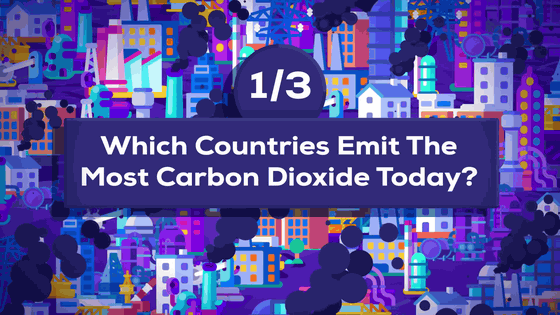
Carbon dioxide emissions in 2017 are 36 billion tons
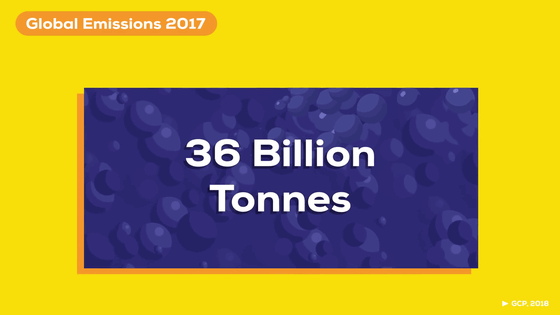
Of that, 53% is from Asia, 18% from North America, and 17% from Europe.
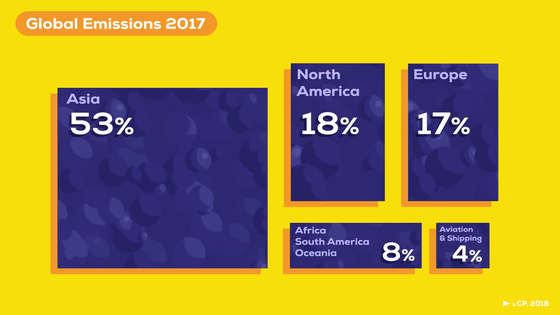
Below is a summary of each country. China has the highest carbon dioxide emissions, which emits 27% of the world's total.
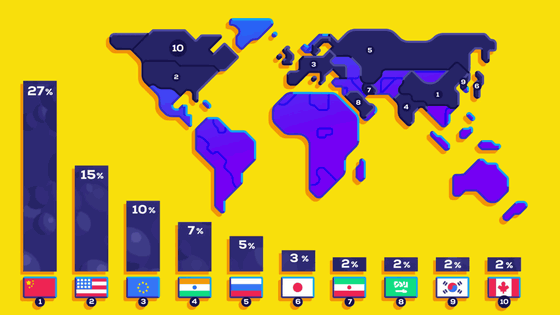
The top 10 emission countries alone account for 75% of the world's carbon dioxide emissions.

So where is the country that emits the most carbon dioxide in total?

China is now the world's top CO2 emitter, but this is not due to its high CO2 emissions from the beginning, due to its rapid growth and inefficient energy policy since the late 20th century. From the 18th century industrial revolution onwards, the total carbon dioxide emissions are higher in the US and Europe.
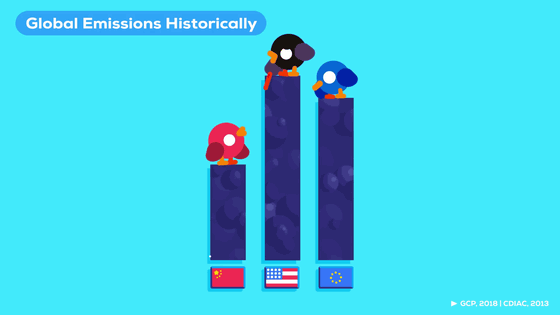
The cumulative amount of carbon dioxide emissions so far is said to be 1,580 billion tons.

Of that, the United States emits 400 billion tons, which accounts for about a quarter. Even if it is limited to the amount of emissions since the beginning of the 20th century, it is calculated that the United States emitted 290 billion tons of carbon dioxide.

The share of total emissions is shown below, and it can be seen that almost half of the emissions have been emitted in the United States and Europe alone.
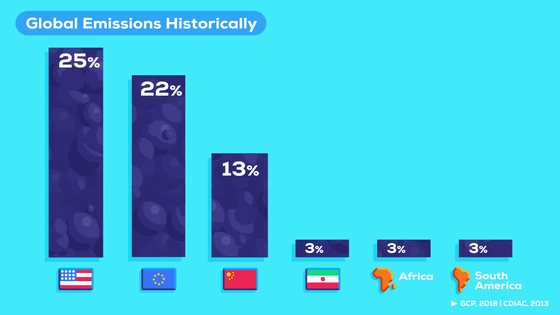
For example, focusing on one German country, the cumulative carbon dioxide emissions are about the same as the sum of the cumulative carbon emissions of South America and Africa. Given these results, developed countries' claims that 'climate change lies with developing countries' are also incorrect.

Next time, pay attention to the country's population. Which country has the highest carbon dioxide emission per capita?
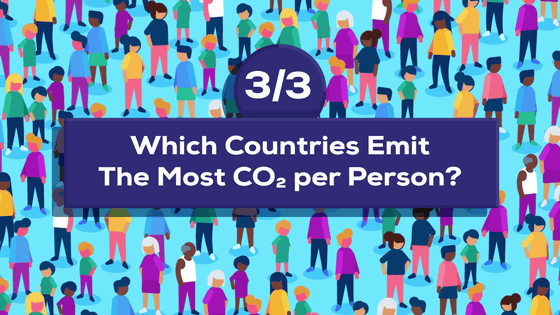
It is said that the world emits an average of 5 tons of carbon dioxide per year in the world.

Qatar, which is also an oil producing country, has the highest carbon dioxide emission per capita. It emits almost 10 times the world average. After that, oil producing countries line up in a row.
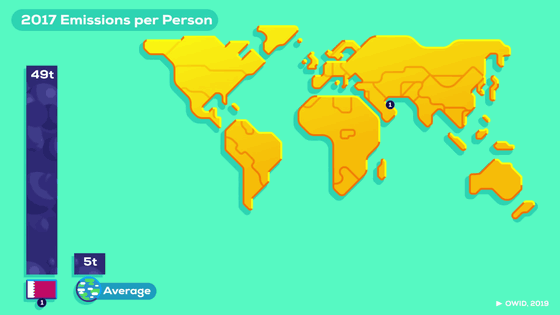
Similarly in Australia and the United States, where oil production is high, the carbon dioxide emissions per capita are more than three times the average. On the other hand, China's carbon dioxide emissions, which are said to be particularly high, emit 7 tons per capita, slightly above the world average.
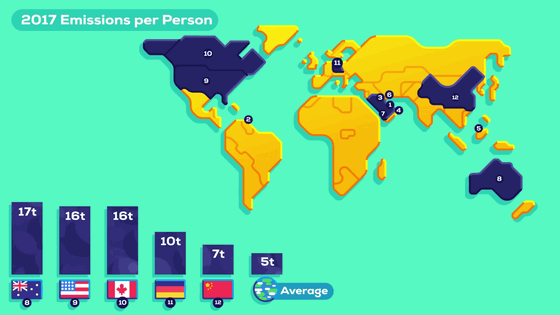
Of the world's total carbon dioxide emissions in 2017, 27% came from China. On the other hand, China's population of 1.4 billion is about 18.5% of the world population. In short, China's carbon dioxide emissions are high not only because the industry has developed rapidly, but because it is too large.
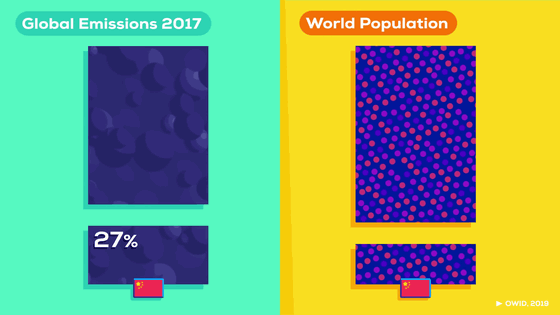
A large population means that not only breathing but also cooking, riding a car, and using electricity increase the amount of carbon dioxide that must be emitted in order to live a life.

In fact, it can be seen that the number of people who are extremely poor in China has declined since 1990, while carbon dioxide emissions have increased. The increase in the number of people living in China, which resulted in a rich life, resulted in an increase in carbon dioxide emissions.
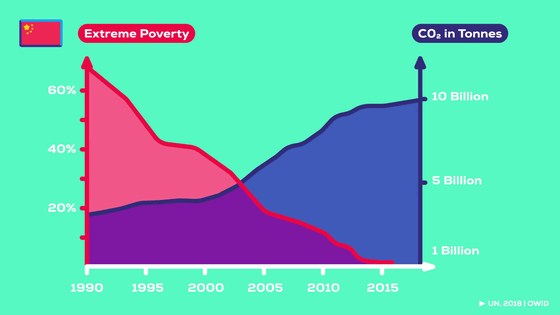
In fact, when comparing the wealthy/upper class 3.8 billion with the middle-downstream/poor 3.7 billion, the CO2 emissions of the rich/upper class are almost the same, even though the numbers are almost the same. It accounts for 86%. Here again, the wealth of life is shown to increase carbon dioxide emissions.
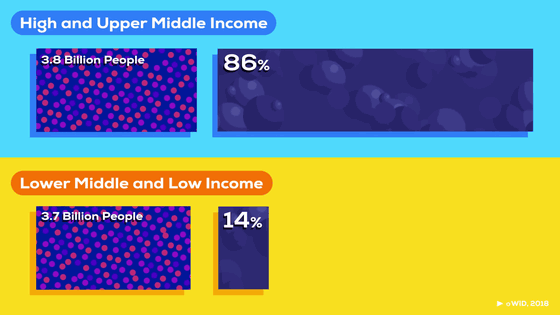
Carbon dioxide emissions and their consequences are even creating inequalities. For example, carbon dioxide emissions per capita in the United States is about 16 tons, while Nigeria in Africa is 0.12 tons, which is about one hundredth. However, the effects of climate change are manifesting in the form of droughts, heat waves, and large-scale flood damage in Central and South America, Africa, and Southeast Asia, where emissions are low.
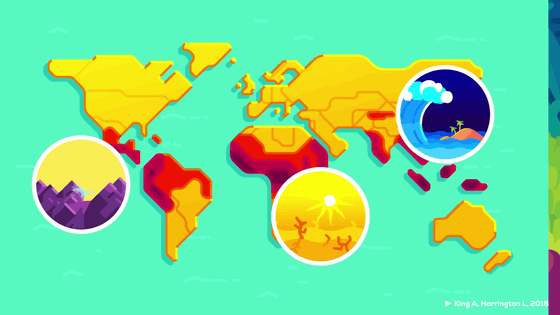
In terms of cumulative carbon dioxide emissions, the United States was by far the top.
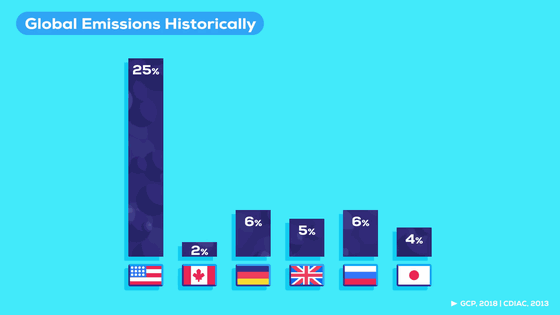
Per capita, we find that all six developed countries have more than the world average.
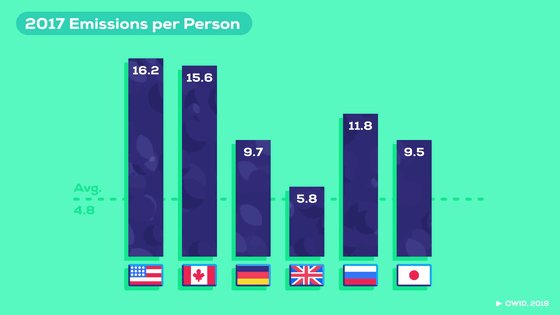
We also know that for one-year emissions, China and India are making remarkable progress, rather than the six developed countries.
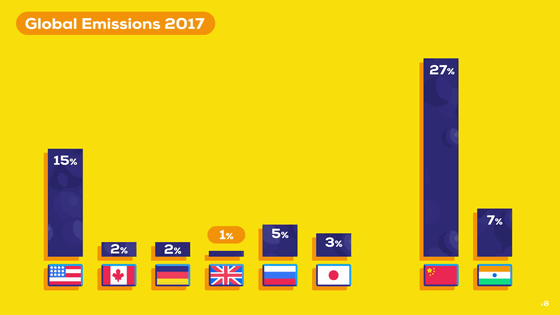
Despite all this knowledge, humans still rely on fossil fuels because of the high cost of renewable energy.
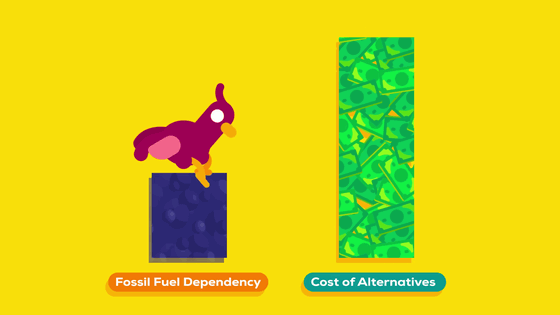
However, due to technological advances, the cost per megawatt hour of wind power, solar power, and

The EU checks the carbon dioxide emissions of household appliances and adjusts them so that only products that meet the criteria are put on the market.

With the world's largest population, China is trying a number of ways to reduce its carbon footprint. Of course, other countries are also mimicking China's scheme to prevent carbon dioxide emissions from increasing sharply.

We should talk more globally and work together to reduce carbon dioxide emissions and limit the impact of climate change.

Related Posts:







